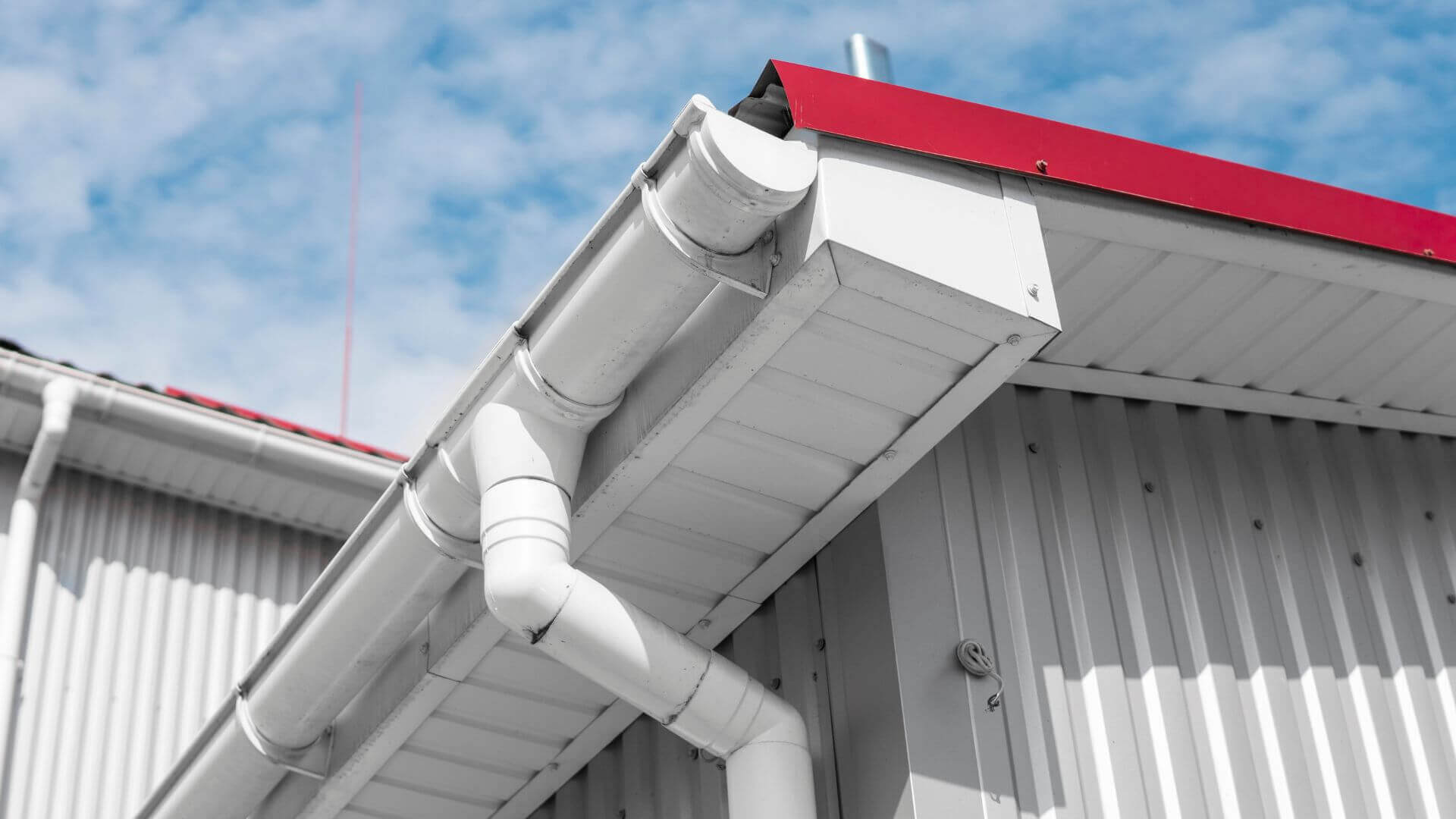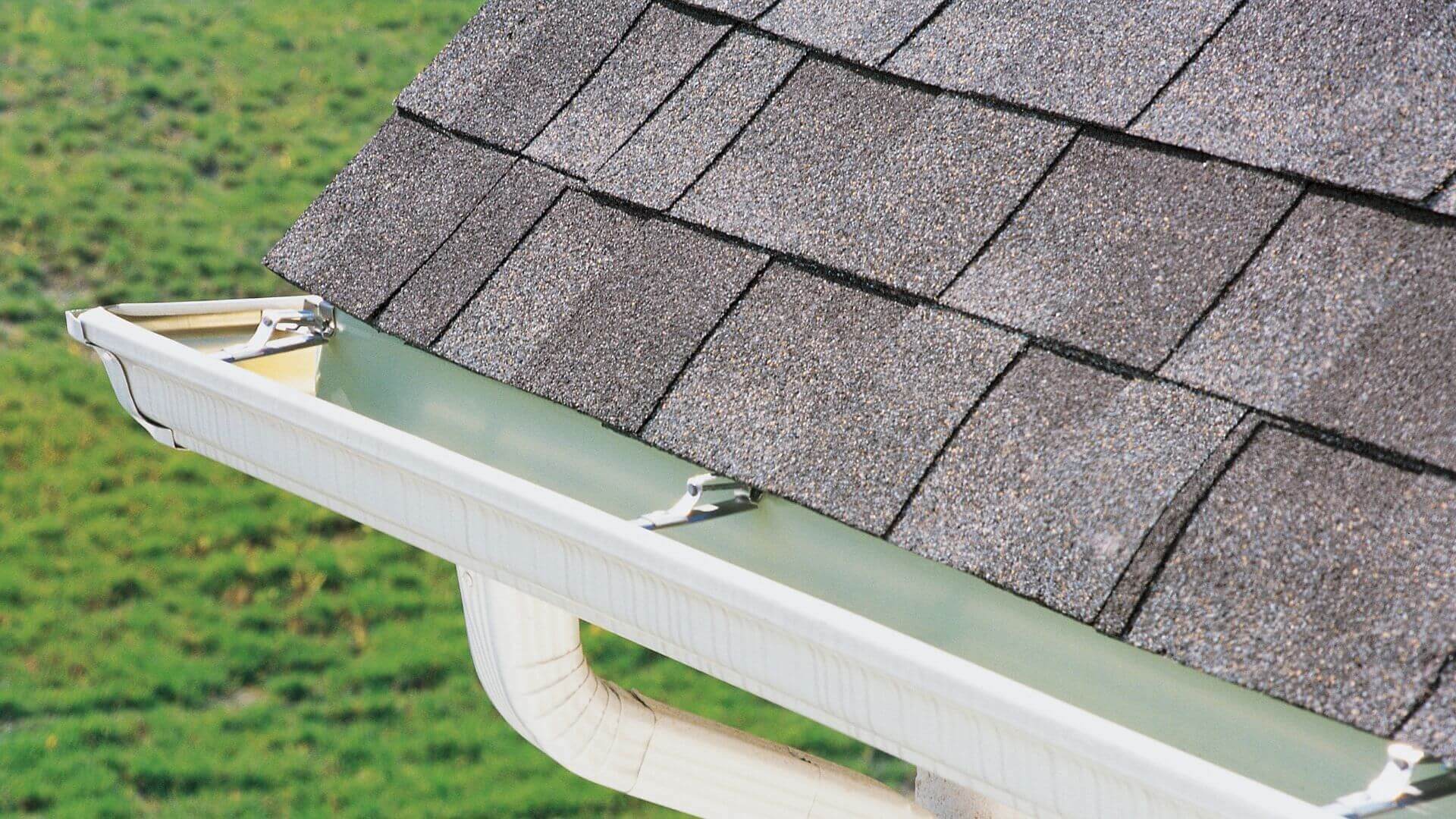Heavy rain? Don’t let overflowing gutters cause water damage! A proper gutter slope, also called pitch, is key. It directs water away from your house, protecting your foundation.
The ideal slope is a balance. Gutters should tilt slightly towards downpipes, but not too much. The standard is 5 millimetres to 10 millimetres per 3 metres of gutter. This ensures water flows freely without overflowing.
Roof size matters. Larger roofs or areas with high rainfall may need a steeper pitch (up to 5 millimetres per foot) to handle the water volume, while smaller roofs might only need a 2-millimetre slope per 3 metres.
During installation, professionals adjust the slope by placing hangers along the fascia board (where gutters attach). Raising or lowering these hangers creates the incline.
Improper slope creates problems. A flat slope (less than 2 millimetres per 3 metres) can cause standing water, attracting mosquitoes and increasing overflow risk. Conversely, a steep slope (more than 10 millimetres per 3 metres) can make water rush through too quickly, leading to overflows at the downpipes.
Check for signs of improper slope, such as standing water after rain, uneven gutter hangers, or a visibly flat gutter line. If you suspect an issue, consult a professional for inspection and adjustment.
A correctly sloped gutter system is essential for protecting your home. It directs water away from the foundation, keeping your home safe from the elements. Say goodbye to overflowing gutters and hello to peace of mind!
The Science Behind Slope: Understanding Gutter Functionality
Gutters play a crucial role in protecting homes from water damage. However, a vital element is the gutter slope for them to function effectively.
Consider rainwater flowing down a hill. That’s the basic principle behind the gutter slope. By creating a gentle incline, rainwater is directed from the highest point of your roof towards the downspouts. This incline is measured by gutter pitch, typically in millimetres per metre (mm/m) or inches per foot (in/ft).
The size and material of your gutters can influence the ideal gutter pitch. Wider gutters, for example, might require a slightly less aggressive slope than narrower ones. While most regions don’t need to worry too much about rainfall intensity, areas with exceptionally heavy rain might benefit from a slightly steeper gutter pitch slope to ensure efficient water flow.
A proper gutter slope is crucial for optimal water flow. Incorrect gutter pitch, whether too flat (0/3) or too steep (more than 10 millimetres per 3 metres of gutter), can lead to several issues.

Standing Water
Water can pool in your gutters when your gutter pitch is too flat (0/9 or 0/5). This creates a breeding ground for mosquitoes, leading to rust and deterioration of your entire rainwater gutter system.
Overflowing Gutters
On the other hand, a pitch that’s too steep (more than 10 millimetres per 3 metres) can cause water to rush over the edge of your gutters, defeating the purpose altogether. This can lead to water damage around your home’s foundation.
Recommended Gutter Slope
The rule of thumb is for a pitch between 5 millimetres and 10 millimetres for every 3 metres of gutter length. This ensures proper water flow without compromising functionality.
Calculating Gutter Slope
There are a few ways to calculate the slope during gutter installation. Here’s a simple method using a string:
- Tie one end of a string to the highest point of your gutter and the other to the location of your downpipe.
- Use a level to ensure the string is parallel to the ground.
- Measure the length of the string (this is your gutter length).
- Based on the recommended pitch (5 millimetres to 10 millimetres every 3 metres), lower the downpipe end of the string by the desired amount (e.g. 5 millimetres for every 3 metres) and mark both ends on the fascia board.
Getting it Right
While a slight slope might seem insignificant, it dramatically affects how effectively your gutters function. Ensuring a proper gutter slope during installation safeguards your home from water damage, ice dams, and other water-related issues.
Remember, if you’re unsure about what gutter size or pitch is right for your home, consulting a professional for gutter installation is always recommended. They can assess your roof pitch, total square footage, and maximum rainfall intensity in your area to determine the optimal gutter slope and size for your needs. They can also advise on gutter guards and other gutter maintenance practices to keep your rain gutter system functioning smoothly for years.
The Ideal Pitch: Finding the Sweet Spot for Your Gutters
Ensuring your gutters have the correct pitch is essential for optimal drainage and protecting your home. The ¼-inch rule is a great starting point for most Australian homes. For every 10 feet (3 metres) of gutter length, there should be an ¼ inch (6 millimetres) slope towards the downpipes. This gentle incline efficiently directs rainwater runoff without causing problems.
However, it’s crucial to maintain an even pitch throughout your entire gutter run (the complete length of guttering collecting water from a specific roof section). Avoid dips or sags, which can create pooling water and potential overflows. Consider installing additional downpipes to maintain proper water flow for longer gutter runs exceeding 40 feet (12 metres). A professional guttering expert can advise on the optimal placement of downpipes to best suit your unique roofline.

The ¼-inch rule is a solid foundation, but some situations might require slight adjustments. Factors like the adjusted square footage of your roof (accounting for pitch) and the type of roofing material can influence the ideal pitch. A professional guttering assessment can identify these unique aspects and recommend the most suitable pitch for optimal gutter system performance.
While gutter pitch is important, it’s not the only factor to consider. The right gutter size also plays a role. When choosing gutters, consider what will handle the expected amount of rainwater runoff for your area. Half-round gutters are a popular choice in Australia, offering good capacity for water flow.
If you’re unsure how to adjust the slope of your existing gutters, consult a professional. They can assess your situation and determine the best course of action, whether minor adjustments or a complete re-installation.
Remember, correctly pitched gutters are vital to your home’s drainage system. Ensuring a ¼-inch slope every 10 feet and maintaining an even pitch throughout the gutter run can prevent water pooling, overflows, and potential damage to your roof and fascia. So, don’t let your gutter pitch be the target of future headaches!
DIY or Pro? Tackling Gutter Pitch
Gutters protect your home from damaging runoff water, but what gutter slope is ideal? With basic tools and knowledge, the handy homeowner can achieve the correct gutter pitch.
How do you install a slope using DIY methods? Your essential tools are a level, tape measure, string line, and adjustable gutter hangers. Measure the length of the gutter and mark the high point where you want the water to flow. Use the string line levelled at a slight slope (no more than 1/4 inch for every 10 feet or approximately 6.35 millimetres) to mark the placement for your adjustable gutter hangers. Make sure to space them at a maximum of 1200mm for stability.
However, consider contacting a professional guttering company for a guaranteed perfect pitch and peace of mind. Trained professionals have the experience to ensure your gutter system is angled flawlessly for optimal water flow and long-lasting performance. They can handle factors like adjusted square footage and even account for your roof pitch to ensure no overflow or pooling occurs.
A wrong gutter pitch can lead to many problems. Standing water in your gutters can attract mosquitos and become a breeding ground for mould. Worse yet, a flat pitch can cause water to overflow, damaging your fascia boards and potentially leading to ice dams in colder climates. Don’t let the gutter slope become a headache! Consider your DIY skills and the complexity of your roofline before diving in. A professional guttering service might be the best solution for flawless installation and long-term protection.
Why Rain Gutter Slope Matters
Have you ever wondered what gutter pitch is and why it’s important? A properly slope gutter system is the unsung hero of your home’s exterior. Here’s how the proper rain gutter slope makes a big difference.
Efficient water flow is key. Imagine heavy rain cascading off your roof. With the correct slope gutters, this water is whisked away from your home’s foundations, siding, and landscaping. No more worrying about water damage – a well-pitched system acts like a protective shield.

But that’s not all. The correct rain gutter slope helps prevent clogged gutters, a homeowner’s nightmare. The water flow acts like a natural current, carrying leaves, twigs, and other debris towards the downspouts. This reduces the risk of blockages and overflows, saving you time and money on cleaning and repairs.
Let’s not forget aesthetics, either. A well-pitched gutter system with seamless gutters complements your home’s overall look. The uniform slope creates a clean and balanced appearance, far more pleasing than uneven or flat gutters.
So, how much slope is ideal? The general rule is 1/2 inch (or 12.7 millimetres) for every 10 feet of gutter. While gutter helmets and other covers can help with debris, they’re not a substitute for a proper gutter slope.
Installing your gutters with the right pitch ensures water flows freely, preventing standing water that can attract mosquitoes and lead to rust. Don’t get caught out with your gutter pitch wrong. Invest in a proper slope gutter system and enjoy the benefits.
Unleash the Power of Perfect Pitch
Achieving the ideal gutter slope and pitch is crucial in safeguarding your home against the weather’s fury. Improperly pitched rain gutters can lead to overflowing water, damaged siding, and even foundation issues. If you’re unsure whether your current gutter slope is optimal or if you’re planning a gutter replacement, contact A.I Gutter & Roofing is the smart choice.
Our expert team can assess your roofline, recommend the ideal gutter system, and pitch for your needs. We don’t just stop at gutters, either. We can advise on gutter helmet installation to further minimise debris build-up and ensure your drip edge is functioning correctly to divert water from your roof.
Remember, a well-pitched gutter system is an investment. With a slope of ¼ inch for every 10 feet of gutter, you can ensure rainwater flows smoothly into place, minimising the risk of overflows. Don’t wait until the next downpour to discover your lacking gutter slope.
Let A.I Gutter & Roofing take the guesswork out of pitch gutter replacement. We’ll assess your needs, recommend the proper gutter slope, and install your gutters and downpipes to ensure your home is prepared for anything the Australian weather throws its way. Contact us today and experience the power of perfect pitch!




